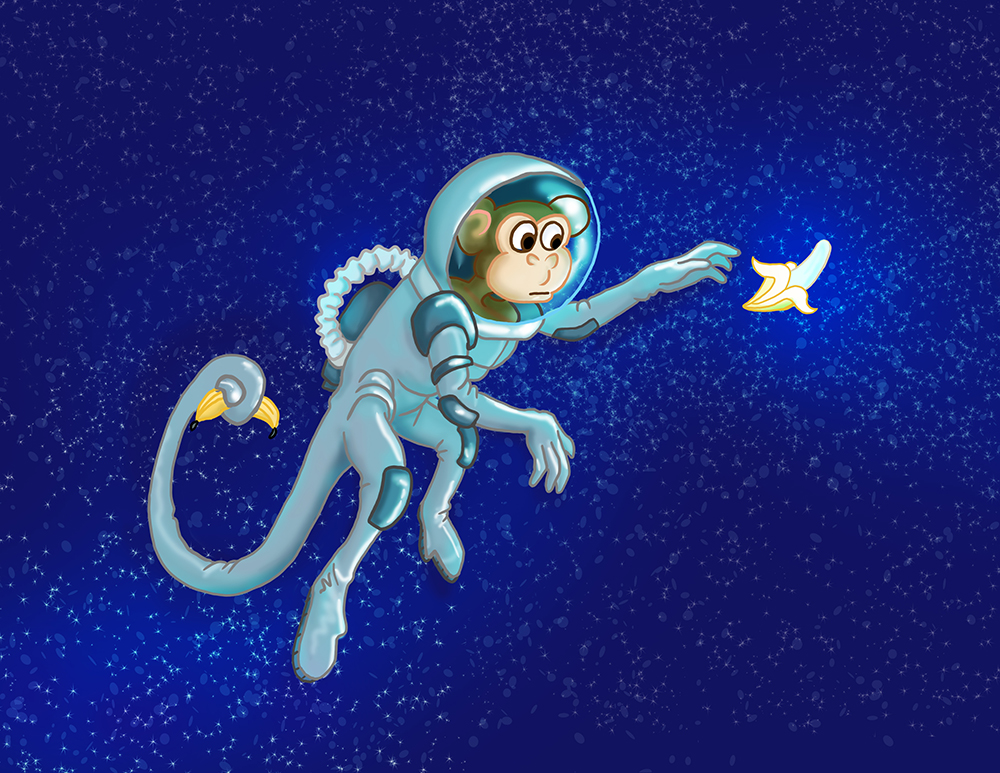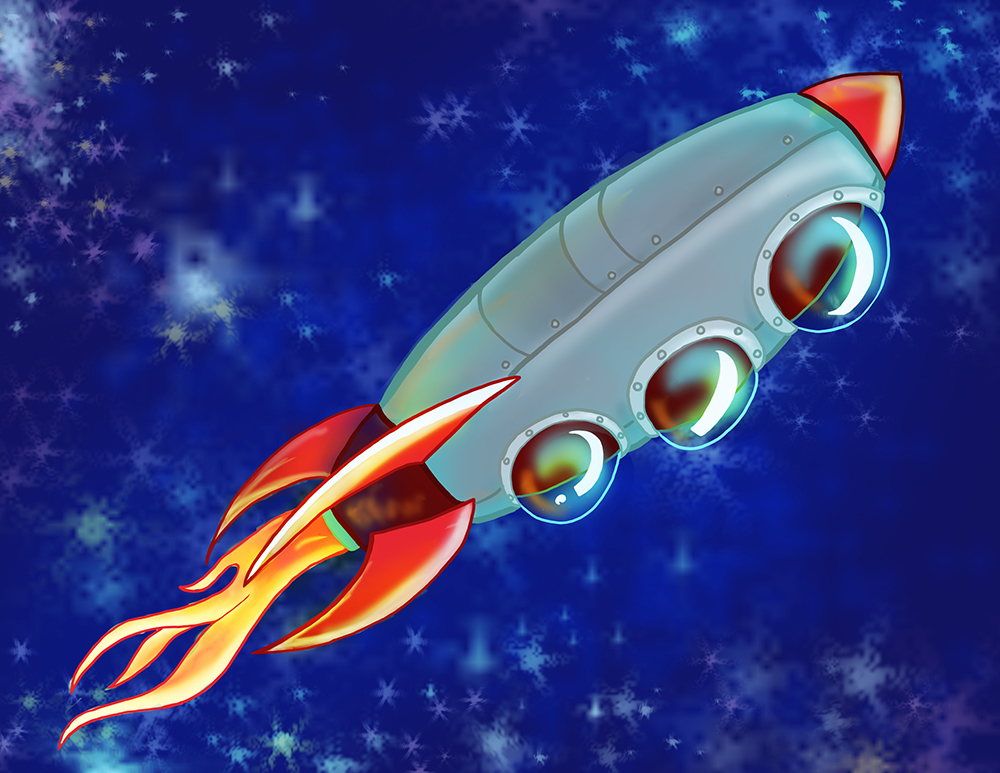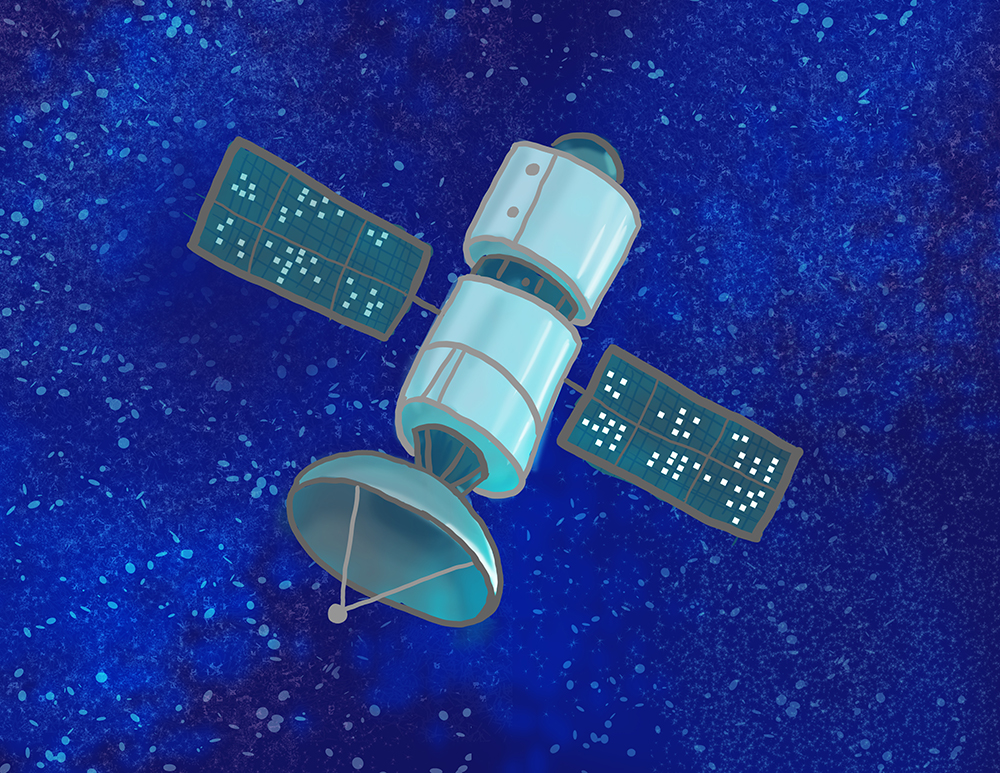Space at RIT and Beyond
by Nicole Howley | published Oct. 1st, 2014
“Imagine if you just flew to South America. You have 500 minutes in South America to get a general idea about what the entirety of Earth is like. Do you think it would be sufficient?” asked Anthony Hennig, a fourth year Mechanical Engineering major and graduate student in Science, Technology and Public Policy.
He used this example to describe how limited space exploration to the planet Venus has been. According to him, human technology has only collectively spent 500 minutes on the planet’s surface. Answering his own question, Hennig said, “Not at all! But how fascinating would it be to have those 500 minutes there, and then keep on staying and keep on exploring?”
RIT isn’t currently planning any major planetary space exploration missions, but a new club on campus and many older initiatives by the university have shown that all of RIT houses a great deal of interest in space exploration, from the mechanical engineering department to the hospitality and tourism management department.
Space 2014
Hennig has been interested in space for as long as he can remember and, in recent years, he has had more opportunity to pursue his interest through work with the NASA Langley Research center in both high school and his time there this past summer.
Over the past six months, this interest has driven him to found the Space Exploration Club at RIT, also known as SPEX. Although they are currently wading through the club approval process, they are already making headway as a club and as an active part of the RIT community.
“We had an information session during finals week last semester and about 10 to 15 people showed up,” Hennig said. Other, more recent meetings have had similar turnouts. “Just this weekend, we had a four-hour engineering design review from 2 to 6. Kids got together on a Saturday afternoon to talk about satellite concepts.”
Currently, the members' main focus is working on a proposal for the CubeSat Launch Initiative (CSLI) run by NASA. CubeSats, or cube satellites, are small satellites typically developed by educational institutions which NASA is currently sending into space to collect scientific data. Some have successfully done this with iPhone-level technology running the satellite, while others can be both more and less complicated. Typically measuring at 10-by-10-by-10 centimeters (about the size of a softball) or up to 10-by-10-by-30 centimeters (about the size of a pineapple), these CubeSats can fit into extra space on shuttles which are already scheduled to send up payloads to the International Space Station (ISS).
“Typically, they hitch a ride somewhere within the structure of the rocket up near where the real payload is,” explained Hennig. “… After the big thing – the one that everyone spent a lot of money on – is deployed, then you launch the CubeSats.”
Due to this waste-reduction measure and the small size of the CubeSats, their production can be very inexpensive. “The cool thing about these satellites is that they embrace low cost … so you can do some really cool science and just embrace it,” Hennig said. “… That’s probably what we are going to aim for, for our first CubeSat: something simple, something that does the science well and that’s that.”
Organizations such as SPEX can send a CubeSat into space for free with CSLI. Through this program and CubeSats themselves, “everyone’s getting a chance to hitch a ride into space,” Hennig said.
Before SPEX does so, though, they need to finish filling out the proposal for their satellite, which is due to NASA on Nov. 25. “We need to have a 10-page document, at least, that outlines our mission, our concepts behind it, our reasons, our educational goals, our engineering goals – and we are going to do our best to submit that proposal as a brand new team,” Hennig said.
Although this may pose a challenge, Hennig said the primary goal is for the group to learn. Part of the requirement of the CSLI itself is to include an educational component to the project.
“It would be great if we could just get a few people – super geniuses – to sit down in a room and crank out a CubeSat in a couple of weeks, program it by themselves, do everything by themselves,” he said. “But that doesn’t have the kind of educational feasibility that we need for [CSLI] and that also doesn’t have the kind of contagious passion, contagious excitement that we need to keep a program sustained.”
Although he acknowledges that many of their projects, from CubeSats to radio and visual tracking, are highly technical, he hopes that the SPEX group can do outreach and develop lesson plans that they can share with the wider Rochester area in order to encourage even more excitement about space.
This passion and excitement, according to Hennig, can be found in anyone regardless of their age or major. “I mean, how many people growing up said, ‘I want to be an astronaut’ … and a lot of people, they move on,” he said. “They go through education and everything and their views change, but we’re finding … in my lifetime, with the career path I’m going down and the classes I’m taking, with the people that I’m meeting, I can still do space.”
Space 1999
Professor Clint Wallington of the department of Hospitality and Tourism Management in RIT's College of Applied Science and Technology was able to participate in space research as well, spending two summers at the Johnson Space Center working with NASA and ISS as a faculty fellow, and later working with space research at RIT.
During his time at NASA, he made the remark, “'…you don’t have any tourism people. You’ve got engineers, you’ve got astronauts. What do you know about tourism?' And they looked at me like, what do you mean?” Wallington said, “And I said, 'I teach in a tourism department. You’re not even thinking about that.'”
“… They said 'Would you do it?' And I said, 'I’m probably not the person that you want. Take my boss Francis Domoy.'” After participating in a panel with astronaut Buzz Aldrin, Domoy, previous director of the School of Hospitality and Service Management, decided that the department should start a course on the topic of space tourism. “Then he turned to me and said, ‘That’s you.’ And I said, ‘Okay’. So I started the space tourism course. It was his idea, but I did the execution.”
Despite his participation, when Domoy first told him that space tourism would happen soon, Wallington was skeptical. When this class was started in 1999, there was talk of space tourism, but many people didn’t predict that it would happen for a long time. “And two years later, there’s a guy in the space station,” said Wallington. “We never thought Russia would sell a seat up to the space station.”
Dennis Tito, NASA engineer-turned-investor-turned-millionaire, was the first space tourist to pay $20 million to the Russian space agency in order to visit the ISS for a little over a week in 2001. Since Tito, six more tourists have also gone to the ISS.
“In 2001 we had an idea … that space tourism would come but it would be more slowly developed,” said Wallington. “We had no idea that Dennis Tito and these rich people would get to ride, and that was a real game changer.”
Now the issues being dealt with in the space tourism class seemed more relevant than ever. Domoy was even quoted in a 2001 Wired article saying that the department intended to host a bachelor degree program dedicated solely to space tourism within three years. Although this dream has not been realized, the class itself still dealt with the many issues that accompany space travel, from how to get people out of the atmosphere and back to how training for tourists would work to how tourists would get by in zero gravity: a problem much more complex than it may seem at surface level.
Wallington described some of the discussions his class had about the lack of gravity in space, bringing up simple questions about how tourists could drink liquids, avoid scattering crumbs of food and simply sleep in an environment where everything floats. He also encouraged his students to think about the less pleasant aspects of space travel. “Some people get sick and throw up,” Wallington said. “Now work that through. If the orange juice floats, what else floats when you throw up?”
Attending to other forms of human waste is also an issue. “When you go to the bathroom [on Earth], it’s gravity that takes care of the waste,” Wallington said. “There’s all these little tiny problems.”
Even when the issues of basic survival and cleanliness are dealt with, there are issues of finding entertainment for those on these week-long trips – and then there are larger issues as well, such as those of training. “Astronauts go through six to eight months of training before their first space ride. Usually it’s two years, but the time you get the full briefing … As a tourist, you would never buy that … Now, what can we do to shorten the training period? What can we do to keep people happy because they’re paying for the ride?” Tito was luckily able to complete the training in only one year.
With all of these bases covered, there is still the issue of federal regulations. After all, Tito, an American citizen, had to go to Russia in order to get on a space flight. “The Americans don’t do it. The Russians do it, interestingly enough. America has laws against that,” Wallington explained.
Currently, the Federal Aviation Administration (FAA) regulates commercial space travel and, due to a lack of movement on the policy front, these regulations are still the same as those regulating commercial air flight. This means that if you want to get to space from the U.S., you must have enough life jackets for everyone on board, a pilot and second pilot, stewards and, of course, pre-flight briefing indicating where all the exits on the aircraft are located.
This lack of movement by the FAA has led to some delays in the progression of space tourism in the U.S. “That’s the problem they’re running into. It’s political,” Wallington said.
The progress of space tourism at RIT has stalled, too. According to Wallington, the class ended in about 2006. “It ended, I think, by accident,” he recalled. The department planned to offer the course in the fall of that year. “It just never got put on the schedule. I don’t know whether anybody ever made a decision. I didn’t yell and run and fight for it; I was busy doing a lot of other stuff. So it just kind of faded away by accident.” Now that Domoy has retired, less focus has been placed on the topic, and Wallington doesn’t predict that it will come back soon.
There were other RIT initiatives that faded away with time, too, and Hennig has been working to pull them back together. “We’ve been slowly collecting up pieces of these old relics of really, really cool space engineering that already happened at RIT and trying to start it again,” he said.
SPEX advisors Dr. Mihail Barbosu, head of the School of Mathematical Sciences and Dr. Dorin Patru, associate professor in the Electrical and Microelectronic Engineering department have been two of the many people helping Hennig and the club’s other members to collect some of this previous space-centered engineering.
One major infrastructural find has been the on-campus mission control. Between 2003 and 2008, Patru actively worked with students to develop an RIT-based launch system through a project he called METEOR, or Microsystems Engineering and Technology for the Exploration of Outer Space Regions.
They planned to lift a small satellite 25 killometers, or 80,000 feet, into the air by balloon and then launch the vehicle from that point “… the idea being you’re closer to space so less air resistance and everything. You can take a small payload for less fuel …” explained Hennig.
“Technically, we can’t call anything we build at RIT in terms of satellites RITSat1. That’s already been taken because RITSat1, I believe, flew up on the bottom of a high altitude balloon,” Hennig said with a good-natured laugh. “It’s already been done, so we’re going to have to do Sat2 or something like that.”
“But, throughout all of this,
Space 2030
With SPEX’s initiatives growing in momentum and with the club’s leaders bringing together space initiatives across the university, the topic of space could be brought closer to the forefront of students’ attention, a trend that Hennig believes is also happening outside of RIT. “There’s a lot of very public, very cool science going on right now, and everyone’s starting to figure out how to connect people with that science going on.”
Wallington is a little bit less optimistic about gaining the public’s attention. “I think it’s faded away because of two things: the recession which cut NASA’s budget and we’ve got a lot of other things going on … So, I think it’s been crowded out, especially with the recession. People thought at one point that this was affordable. Now they are thinking ‘Do I have a job at all?’ So that’s pushed it to the back burner. If that changes, I think it will come back.”
Wallington believes that it will be difficult for most people to make it to space in their lifetime unless they are willing to pay large sums of money for it. But with projects like those that SPEX is working on, there might be other options for people to get their space fix, and to continue exploring their interest in space. “It’s a different type of group right now,” said Hennig. “We’ll see how it all plays out.”






